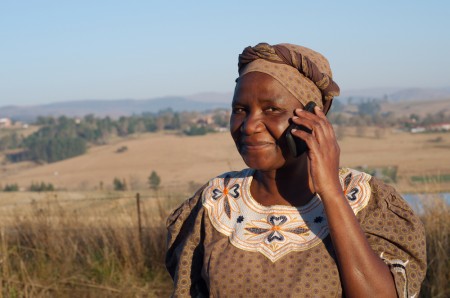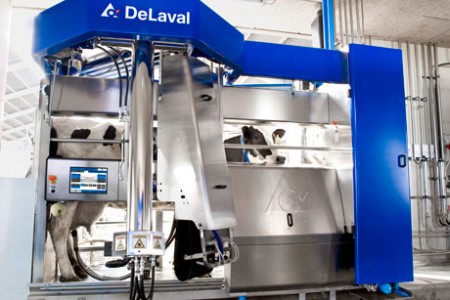January 15, 2016 – The challenge that lies ahead for humanity is simple. By 2050 be able to produce food and deliver it to a population of 9 billion plus. I call this act “from farm to fork.” We have to do this while facing global warming. And we have to do it exploiting the technologies that currently exist and that soon will be part of our set of tools here in the 21st century. The end result will ensure that by the mid century human hunger will be a thing of the past.
Today 800 million of us are chronically hungry. It isn’t because we cannot produce food in sufficient quantity to feed all the people on this planet. We grow and more than enough. And even in the face of droughts and extreme weather we harvest more than enough. Where we screw up is in distribution and storage.
Here are some potent agricultural facts:
- In the last 40 years average crop yields globally per hectare have increased by 77%.
- In the 50 years since 1961 we use 68% less land to produce the same amount of food.
- Of the 13 million hectares of land mass in the world, almost 4.9 million, or almost 38% is defined as arable, that is, under tillage or pasturage.
- Temporary tillage, lands planted annually, periodically left fallow or abandoned arable plots, accounts for 28% of the total.
- Permanent crops, plants like shrubs, fruit and nut trees, and vines, accounts for 3%.
- Permanent meadows and pastures, lands that are planted with crops to feed livestock, or grazing lands, accounts for 69%.
In developed countries agriculture today is an industry no different than manufacturing or resource extraction. The wide usage of fertilizers, pesticides, irrigation, selective breeding, genomics, and genetically modified staple crops make it possible to continue to produce record yields. Add to this a battery of high technology devices that sense changes in soil moisture, track evapotranspiration rates from planted fields, and the use of drones packed with sensors and cameras to survey and report on farmers’ fields in real time, are giving farmers all the data necessary to deliver higher yields through increasing intensification. The same is true for livestock production whether for meat or dairy. 21st century technology helps farmers to monitor the wellness of their animals. Dairy farms today are so automated that the cows initiate milking interacting with robots.
It is developing countries, with more than 2.5 billion still live on subsistence farming plots of less than 2 hectares (approximately 5 acres), that need to exploit technology if humanity is to increase global crop production by 90% between now and 2050. While at the same time these developing countries are being asked by the more developed world to preserve forest lands as carbon sinks and weather modifiers, in the fight against global warming. Developed nation governments, industry and conservation activists are paying developing world countries not to harvest their forests. In Costa Rica, for example, close to 10% of the country is dedicated to rainforest conservancy. Liberia has received financial assistance from Norway seeking carbon credits to offset its oil industry’s emissions. The money is ensuring that Liberia doesn’t cut down its rainforests.
For developing world nations it means even more stresses for food growing regions. But this stress can be mitigated by the dissemination and lowering of the cost of technologies that richer countries currently use. Whether it is deployment of micro-drip irrigation systems, provision of drought-resistant seeds, development of affordable renewable energy, and shared information disseminated from the Internet through cheap smartphones, the farmers of the developing world can raise yield levels and in the process help to fulfill the delta between what is produced today and what will be needed to feed humanity by mid century.
Add to all the above the need to invest in developing world rural infrastructure and you have all the ingredients for success in meeting food demand. Here are some interesting facts:
- if one-quarter of the food currently lost or wasted globally could be properly stored and delivered to consumers it would be enough to feed 870 million today.
- Of that 870 million, food lost or wasted in Latin America could feed 300 million. The number is the same for Africa.
- In developing countries 40% of food losses occur post harvest.
- The total value of food losses in the developing world amount to $310 billion annually
And yet we have the technology solutions to address these problems today: we have post-harvest solutions that include proper storage structures and refrigeration that can be situated on or near where crops are grown, and we have transport technology with climate control that can deliver food to hungry consumers.
“From farm to fork” is the world mantra that will drive innovation in agriculture this century. Using and disseminating the latest technology and tools to all farmers both in the developed and developing world will ensure we meet both present and future food demand. The end result will be a world where no one goes hungry when there is more than enough food to go around.











It’s clear that we will need to do more to prevent the suffering of millions (or billions) of people, but nature has a way of forcing balance. If it is unsustainable, our population WILL reduce. Eventually we will reach an equilibrium or a cyclical growth-and-decline in population. It is pretty clear that we will not be able to have an unlimited growth in population and remain on one planet, and with space travel and off-world living being prohibitively expensive in the near term, we are going to have to face the limit in population.
The one way out is by limiting population growth. Most advanced OECD countries have had limited growth, and much of that has been through immigration. By raising the standard of living, societies seem to reach that equilibrium quicker. Better social and economic standards will be the best way out for our human society.
[…] 40. (1) How will the world’s farmers feed 9 billion by 2050? […]